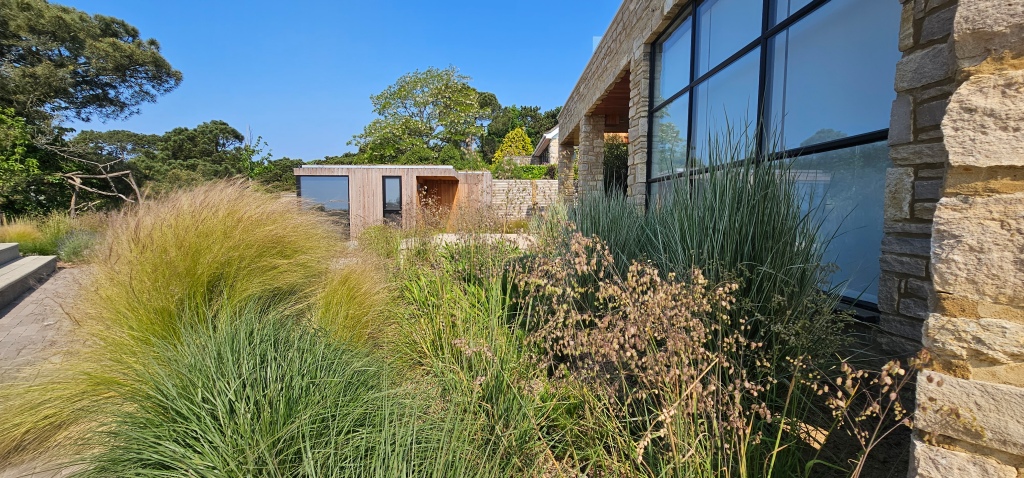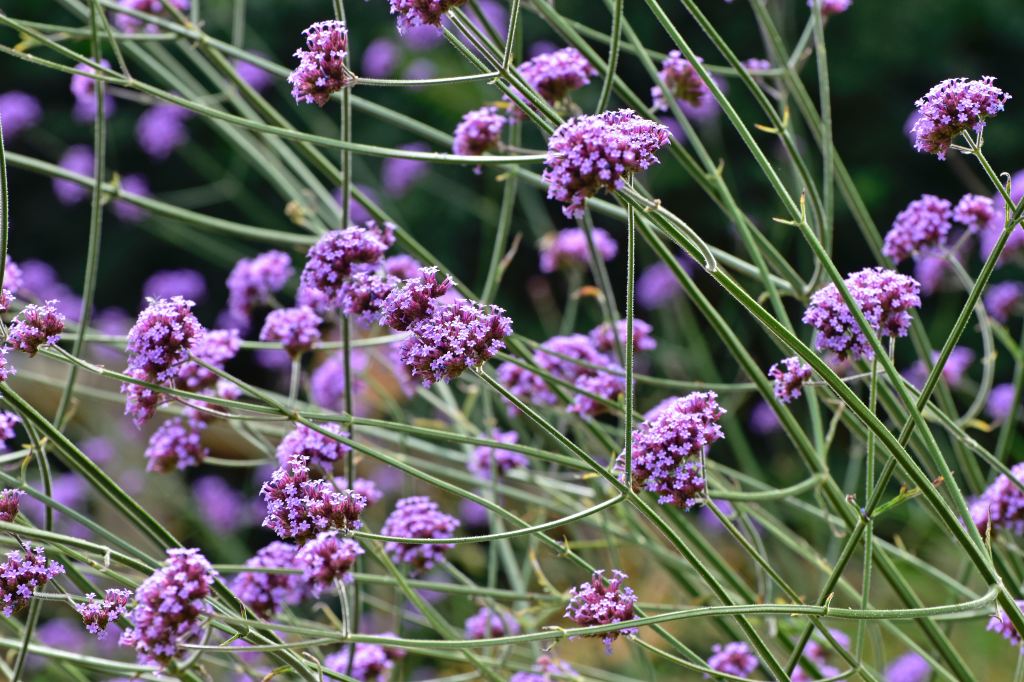
Climate change affects us all in one way or another, especially us garden designers and horticulturalists. The hotter longer summers means that our planting palettes, especially throughout our designs across Dorset, Poole and Hampshire, are starting to take a turn in trends with a huge focus on drought tolerant species. Aspect does still play a part in plant selection where if you have a north facing, shady garden then you can still use your hostas and ferns!

As temperatures are rising and we are watering our gardens more and more, selecting a drought tolerant planting palette is becoming a necessity. There is always a chance that we are going to be entering into a hosepipe ban, which is never ideal for our plants. The best way to foresee this is to select plants that love being in drought conditions, that love the aspect of your garden and to water them in well to get them settled and growing before the heatwave and subsequent hosepipe ban comes in. Giving your plants a little feed can also go a long way.
Another benefit, especially to our clients, is that with a drought tolerant palette the chosen species will require little maintenance. Typically the plants will need pruning and looking at once a year when required. The perennials and deciduous grasses will need cutting back 6″ above the ground in the Spring, depending on the individual plant.
Soil type also plays a huge part in the plant selection and creating a successful planting drought tolerant planting scheme. During a period of warm weather, different soil types will have an affect on the amount of nutrients getting to the roots of the plants as well as water retention. It is always best practice to work the soil with additional growing media to provide additional nutrients to the planting areas.
For a successful scheme, plant choice and selection is going to be important. The downside to having a drought tolerant planting palette is that apart from Briza media, Deschampsia cespitosa and Luzula nivea, having a variety of native plants is going to be difficult to incorporate within this planting scheme.
The use of shrubs in this type of scheme helps add structure and texture all 12 months of the year. These plants are vital especially during the winter months. During the dry spells, the right variety of shrubs will thrive and provide a strong base for the perennials and grasses. The best shrubs for this style of planting is a Pittosporum tenuifolium ‘Golfball’ and a Pittosporum tobira ‘Nanum’. These two different varieties of Pittosporums thrive in all types of soils as well as drought conditions. They are also an excellent example of providing texture and form to the planting areas. Other textured shrubs that are brilliant are the majority of Hebe’s, Lavender as well as Ilex crenata ‘Convexa’.

To add the combination of height, texture, movement and sound, the introduction of grasses to your drought tolerant planting scheme will help achieve this. Typically grasses love the dry conditions, throughout our planting schemes we love to use a balance of evergreen, deciduous, small and tall ornamental grasses. For range of textures and heights I love to use Pennisetum villosum, Stipa tenuissima, Anemanthele lessionia and Calamagrostis x acutiflora ‘Karl Foerster’.

Perennials are the staple of the drought tolerant scheme, they are a great way to introduce colour and wildlife into the garden. Once the perennials have been sufficiently watered in and have started to spread their roots they will start to thrive. All evergreen Agapanthus are a brilliant way of introducing height and colour as well as a species that thrives in drought conditions. Verbena bonariensis, rigida and bampton love the warm weather especially once established. The tall narrow stems leading to a flatted purple flower add a subtle brightness of colour to the scheme. There are so many other great perennials that you are able to use.



